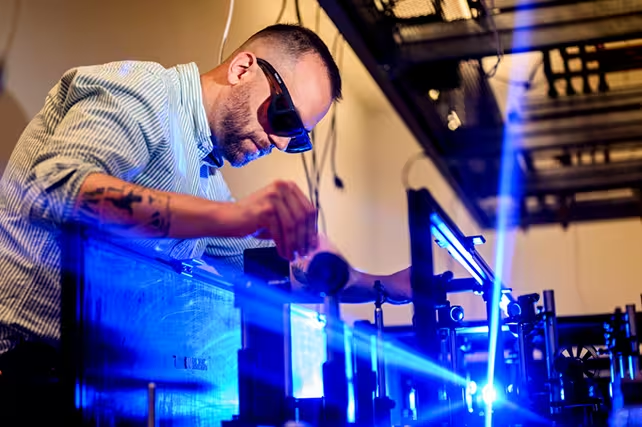4 Minutes
Revolutionizing Electronics With Quantum Materials
Recent advances in quantum materials research may soon reshape the landscape of consumer electronics. Scientists from leading US research institutions have unveiled a pioneering technique to manipulate the electronic states of a material called 1T-TaS₂ (tantalum disulfide), a development that could eventually boost the speed of smartphones, laptops, and other digital devices by up to 1,000 times compared to today's fastest technology.
Quantum materials are exotic substances whose properties are dictated not by classical physics, but by the laws of quantum mechanics, resulting in behaviors far outside those of everyday materials. Their unique ability to exhibit different electronic phases—switching between conducting electricity as metals or blocking it as insulators—opens up new possibilities for ultra-fast, energy-efficient electronic components.
The Science Behind the Breakthrough
At the core of this discovery is a process engineers call "thermal quenching," which involves rapidly changing the temperature of 1T-TaS₂. This layered crystal can then swiftly transition between two opposing electronic states: conducting (as a metal) and insulating. Such binary switching forms the foundation of how transistors in computer chips process data, controlling the flow of electricity to execute commands and store information.
Traditionally, switching phases in quantum materials required extreme, cryogenic (ultra-cold) temperatures, making them impractical for mainstream use. The recent experiments, however, demonstrated successful phase switching at far more accessible temperatures—and crucially, the switched states remain stable for months instead of fleeting seconds.
According to physicist Gregory Fiete of Northeastern University, "We are leveraging the fastest phenomenon allowed by nature—light—to control material properties at speeds close to the physical limit." By timing the temperature changes precisely—quick enough to be effective without collapsing the material's unique quantum states—researchers achieved a new level of stability and speed in their tests.

Implications for Next-Generation Electronics
All digital devices require a combination of conductive and insulating materials, often assembled in complex architectures. The prospect of using a single, light-controllable quantum material to perform both functions could shrink device sizes dramatically, reduce energy consumption, and, most importantly, accelerate processing speeds to levels previously thought impossible.
Fiete explains, "One of the ultimate challenges in materials science is achieving precise, rapid control over material properties. This is what makes the technology device-ready."
Although current applications are confined to the lab, the implications for future consumer technologies are profound. As traditional silicon-based semiconductors approach their physical performance limits, researchers and manufacturers are searching for alternative materials that can continue the exponential growth in computing power predicted by Moore's Law.
Facing the Limits of Silicon and the Promise of Quantum Materials
For decades, silicon chips have powered the digital revolution, but their miniaturization and speed are now nearing practical boundaries. Breakthroughs like the one demonstrated with 1T-TaS₂ offer a potential new paradigm for electronics, complementing advances in quantum computing and data storage.
As Fiete notes, "To achieve dramatic gains in information processing and storage, we must break from conventional approaches—either through revolutionary computing concepts like quantum computers or by innovating new quantum materials. Our work is firmly in the latter direction, revealing how material science can unlock a new era of ultrafast, efficient electronics."
While more research and engineering are required before quantum materials appear in everyday gadgets, this progress marks a critical step toward the next wave of technological advancement.
Conclusion
Harnessing quantum materials like 1T-TaS₂ for light-driven, ultra-rapid electronic phase control could usher in a new generation of computing hardware. By overcoming the constraints of silicon and stabilizing quantum states at practical temperatures, scientists are paving the way for devices that are not just faster, but fundamentally smarter and more efficient. As research continues, the dream of thousand-fold faster smartphones—and other revolutionary electronics—edges closer to reality.



Comments